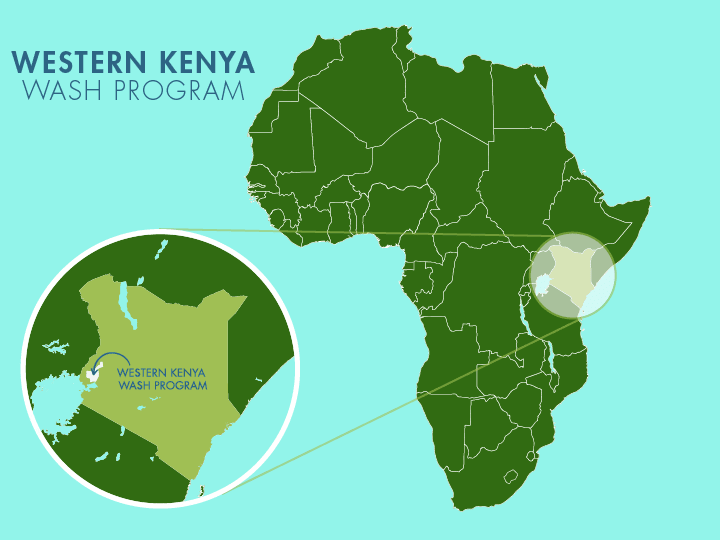Delayed progress is the norm for the 219 residents of the Kwava Community. Their main water source, Mark Mweri Spring, is far away and overcrowded, and contaminated water flows from the collection pipe.

Rachel Obura, field officer, described the waterpoint. "The spring's collection area is dirty, and the head wall is cracked, allowing seepage. Additionally, the stairs and floor are worn out. Drainage is also blocked. Without a doubt, water from the spring contains small sand particles that make it far from crystal clear. At its current condition, community members are prone to getting injured in the course of fetching water."
Twelve-year-old Letrine is all too familiar with the struggles associated with her community's spring.

Letrine.
"The distance from home to the water point is far, contributing to the longer time taken to fetch water. Sometimes there are many people at the water point, making me wait for long hours before fetching water. The path to the water source is characterized by steep slopes. This makes it hard to navigate while going to fetch the water."
"Being that the waterpoint is a bit far from home, I spend a lot of time on the way, time that I would otherwise use for studying," she added.
It's not just the navigation to the spring that creates roadblocks. She knows every drop she collects has the potential to make her and her family sick - again.
"Collecting water has become a difficult, risky, and time-consuming affair. The threat of catching diseases hangs on our necks every single day, and that has instilled fear in my community," lamented Letrine.

Letrine at the spring, hauling water home.
Letrine knows well that water is life. Without it, she can't go to school, wash her clothes, eat, or bathe. But her current waterpoint doesn't provide the way it should. Due to the time it takes to collect water, community members often become restless in line and make children wait to fill their jerrycans until the adults are finished.
"Adults get priority at the waterpoint, and whenever they find me in the queue, I'm forced to wait longer for my turn," she explained.
Despite the frustrations she encounters on a daily basis, Letrine shoulders the responsibility to collect water, knowing that her mother already carries many burdens.

"I don't like it, but it's not a choice I have to make. After a long day's work in the garden and in the house, I would not allow my mum to go fetch water again in the evening," she asserted.
We have a plan to help Letrine achieve her goals.
"My plan is to finish my studies, get a job, and offer [a] solution to the water challenges in my community," she bravely shared.
Protecting her community spring will give her the time and energy she needs to prioritize her education, while still contributing to her family's needs. With the repair comes peace of mind, knowing the water will be safe to consume. Where fear once flowed from the spring, we plan to replace it with hope.
For Letrine, this transformation means more than safe water—it means time to learn, freedom to dream, and the chance to build the future she envisions.
Steps Toward a Solution
Our technical experts worked with the local community to identify the most effective solution to their water crisis. They decided to safeguard the existing flowing spring.
Spring Protection
Springs are natural water sources that originate from deep underground. As water travels through various layers of the earth, it undergoes a natural filtration process, making it cleaner and safer to drink. To protect these spring sources from contamination, we construct a waterproof cement structure around layers of clay, stone, and soil. This design channels the spring water through a discharge pipe, facilitating easier, faster, and cleaner water collection.
Chlorine Dispenser
As an extra measure towards water quality safety, uniquely engineered chlorine dispensers are installed at all of our spring protection projects so community members can treat their water with pre-measured doses of chlorine. The chlorine treats any possible contamination and stays active for two to three days, ensuring water stays safe to use even when stored at home. Chlorine delivery and maintenance of the dispensers are part of our ongoing community support.
Community Education & Ownership
Hygiene and sanitation training are integral to our water projects. Training is tailored to each community's specific needs and includes key topics such as proper water handling, improved hygiene practices, disease transmission prevention, and care of the new water point. Safe water and improved hygiene habits foster a healthier future for everyone in the community. Encouraged and supported by the guidance of our team, a water user committee representative of the community's diverse members assumes responsibility for maintaining the water point, often gathering fees to ensure its upkeep.

 Protected Spring
Protected Spring
 Rehabilitation Project
Rehabilitation Project


















